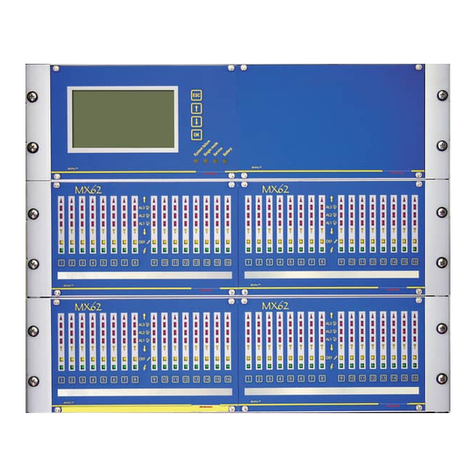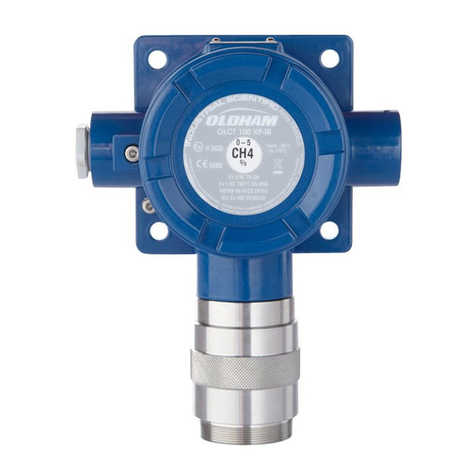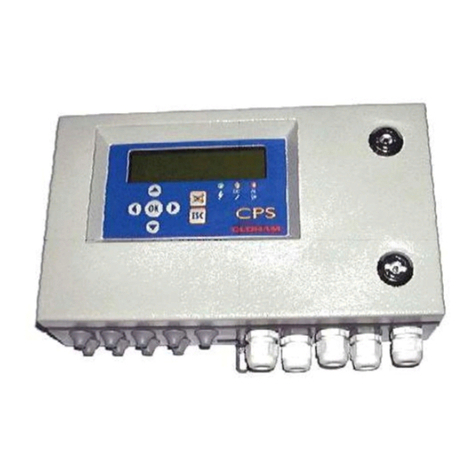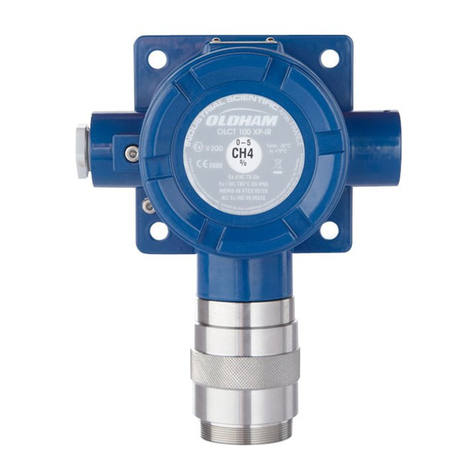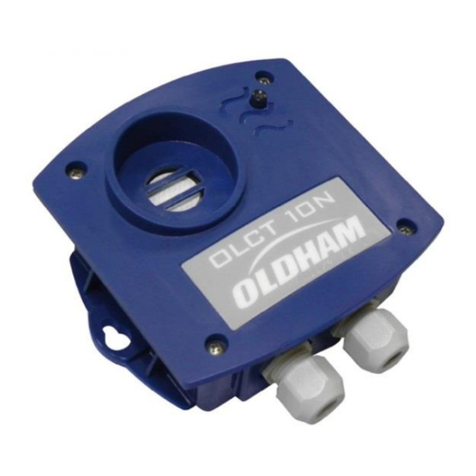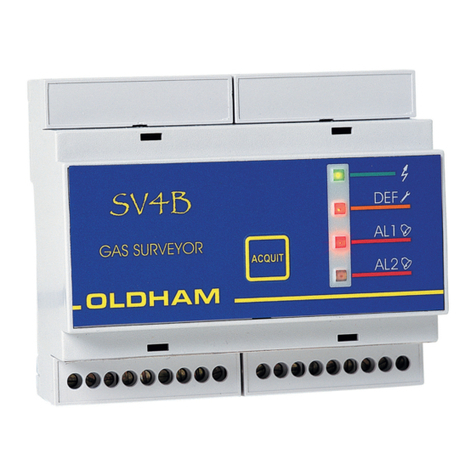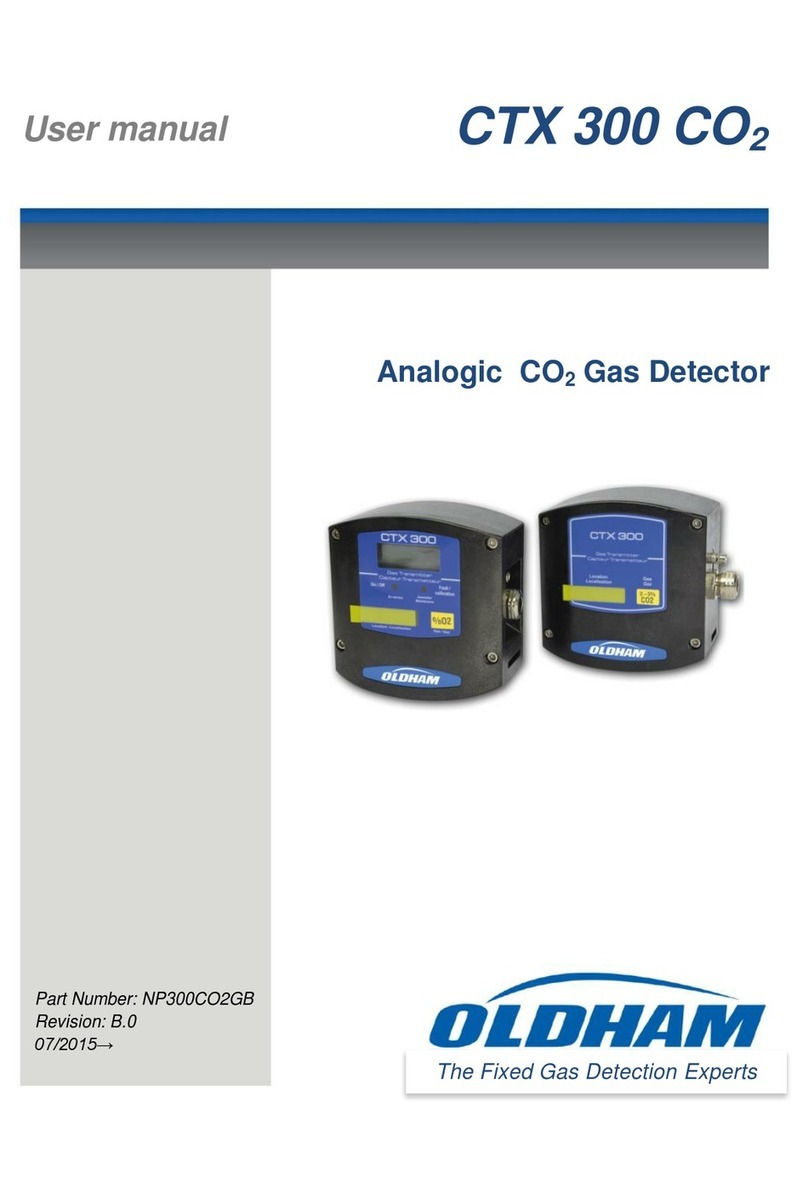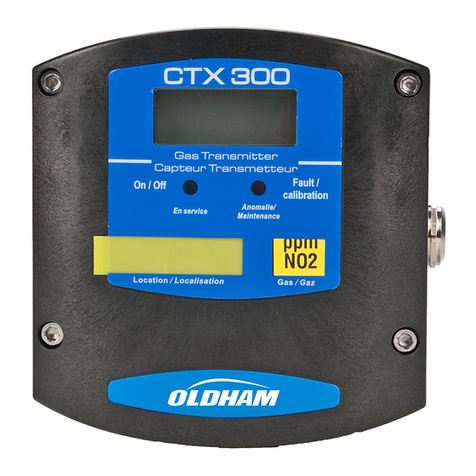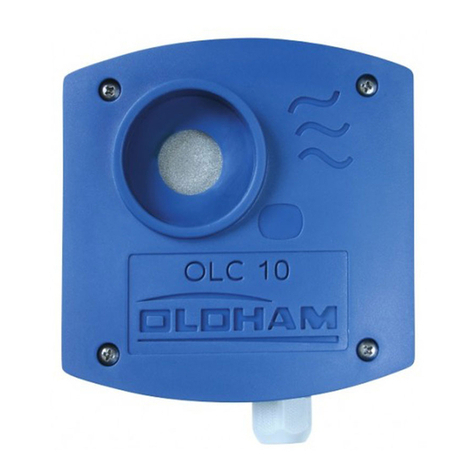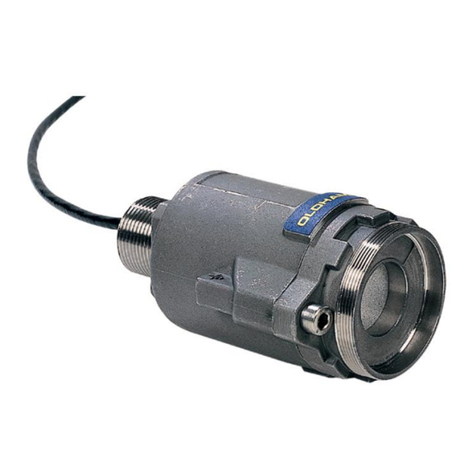
4
LIMITS OF RESPONSIBILITY
* OLDHAM SA hereby rejects any and all responsibility with regard to any person for material
damage, bodily injury or death resulting in whole or in part from the inappropriate use,
installation or storage of its equipment not conforming to the instructions and to warnings and/or
not conforming to standards and regulations in force.
* OLDHAM SA does not allow or authorize any company, person or legal entity to assume such
responsibility on the part of OLDHAM SA, even if involved in the sale of the products of
OLDHAM SA.
* OLDHAM SA shall not be liable for any direct or indirect damage, or any direct or indirect
legally awarded damages resulting from the sale and use of any of its products, UNLESS
THOSE PRODUCTS WERE SPECIFIED AND CHOSEN BY OLDHAM SA FOR THE
USE MADE OF THEM.
OWNERSHIP CLAUSES
* Sketches, drawings, specifications and data included herein contain confidential information
which is the property of OLDHAM SA.
* These information shall not be, in part or in whole, physically, electronically or in any other form
whatsoever, reproduced, copied, divulged, translated, used as a basis for the manufacture or sale
of OLDHAM SA equipment or used for any other reason without the prior approval of
OLDHAM SA.
WARNINGS
* This document is not a contractually binding document, OLDHAM SA reserves the right to
make any changes, without notice, to the technical characteristics of its equipment in order to
improve performance levels, in the interest of its customers.
* CAREFULLY READ THE INSTRUCTIONS BEFORE ALL FIRST USE:
This instruction manual must be read by any person who is, or will be, responsible for the use,
maintenance or repair of this equipment.
* This equipment will conform with the specified performance levels only if it is used,
maintained and repaired in accordance with the directives of OLDHAM SA and by
OLDHAM SA personnel or personnel authorized by OLDHAM SA.
